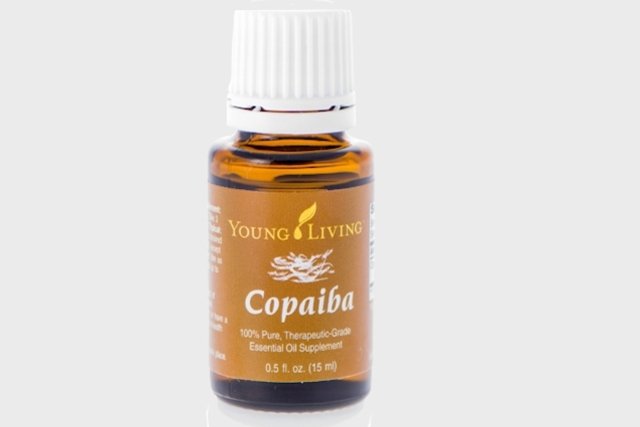Copaíba oil, or copaíba balsam, is a resinous product extracted from the trunk of the copaíba tree, a tree of the species Copaifera officinaliswith anti-inflammatory, healing, analgesic and expectorant properties, and is indicated to help with the healing of wounds, coughs or to alleviate the symptoms of arthritis, for example.
In addition, copaiba oil is also used in various anti-inflammatory and healing ointments and creams, as well as in lotions, anti-dandruff shampoo, oral care and acne products, soaps and intimate hygiene products.
Copaiba oil can be found in pharmacies or health food stores in the form of capsules or essential oil and its use should always be carried out under the guidance of a doctor or herbalist.

What is it for
Copaiba oil is indicated to help in the treatment of:
- Wound healing and disinfection;
- Cough, bronchitis, flu and colds;
- Diarrhea or hemorrhoids;
- Cystitis or infection in the kidneys or urethra;
- Skin problems such as psoriasis or eczema;
- Gastritis, gastrointestinal ulcers or infection with Helicobacter pylori;
- Urticaria or skin mycoses;
- Rheumatoid arthritis or tendonitis.
Copaiba oil can also be used to combat infections that can be transmitted sexually, mainly genital herpes and syphilis.
Furthermore, some studies also indicate that copaiba oil has properties that have been shown to be effective in helping to treat different types of cancer and tuberculosis. However, more studies are still needed to confirm these properties. Learn more about the properties of copaíba.
Although it has many health benefits, copaiba oil does not replace medical treatment and should be used under the guidance of a doctor or herbalist.
Properties of copaiba oil
Copaiba oil has healing, antiseptic, antibacterial, diuretic, anti-inflammatory, expectorant, analgesic, antirheumatic and antidiarrheal properties, due to the substances present in its composition, such as beta-caryophyllene and beta-bisabolene, for example.
How to use
Copaiba oil can be used in the form of an essential oil or in capsules.
The main ways to use copaiba oil are:
1. Copaiba oil (for oral use)
Copaiba essential oil can be used orally by adults to help with digestive and respiratory problems or strengthen the immune system, and should only be used under the guidance of a doctor or herbalist.
Ingredients
- 1 drop of copaiba essential oil;
- 1 glass of water, juice or 1 cup of tea.
Preparation mode
Add a drop of oil to a glass of water, juice or tea, and drink once a day.
2. Copaiba oil (for external use)
Copaiba essential oil can be used to help treat skin problems, such as psoriasis, dermatitis, disinfection and healing of wounds or skin mycoses, for example.
Ingredients
- 1 or 2 drops of copaiba essential oil;
- 1 or 2 tablespoons of a carrier oil, such as almond oil or coconut oil.
Preparation mode
In a clean and dry container, place the drops of copaiba essential oil and vegetable carrier oil and mix. Apply the mixture to the area of skin to be treated, once a day, massaging gently until the oil is completely absorbed.
Before using copaiba essential oil, an allergy test must be carried out, preparing a mixture containing 1 drop of essential oil in 1 teaspoon of carrier oil, and applying it to the back of the hand or the crook of the elbow. .
Wait 24 hours and, if during this period the skin becomes red or irritated, it is not recommended to use copaiba essential oil.
3. Copaiba oil (for inhalation)
Copaiba essential oil can also be used for inhalation to help relieve coughs, bronchitis, flu or colds.
Ingredients
- 3 to 4 drops of copaiba essential oil;
- 1 liter of water.
Preparation mode
Bring the water to a boil, turn off the heat, pour the boiling water into a basin and add the drops of copaiba essential oil.
Then, cover your head with an open towel, so that it also covers the container containing the copaiba essential oil solution. Tilt your head over the container and inhale the steam as deeply as possible for up to 10 minutes, once a day.
This towel helps keep the solution vapor for longer, and you must be careful not to bring your face too close to the copaiba vapor to avoid burning your face.
When you finish inhaling, it is important to wipe your face with a towel damp in cold water or wash your face under running water.
4. Copaiba oil capsules
Copaiba oil capsules should be taken orally, recommended only for adults, to help treat respiratory or urinary diseases.
The normally recommended doses are 1 capsule of 250 mg of copaiba oil, 1 to 2 times a day, or as directed by your doctor or herbalist.
Possible side effects
Copaiba oil is safe for most adults when consumed orally or used on the skin in recommended doses.
However, when consumed or used in excessive amounts, it can cause some side effects that include stomach pain, nausea, vomiting, diarrhea, tremor, insomnia, redness or itching of the skin.
Who shouldn’t use
Copaiba oil should not be used by children, pregnant or breastfeeding women.
Furthermore, it should also not be used without medical advice by people who have gastrointestinal disorders.

Sign up for our newsletter and stay up to date with exclusive news
that can transform your routine!
Warning: Undefined array key "title" in /home/storelat/public_html/wp-content/plugins/link-whisper-premium/templates/frontend/related-posts.php on line 12
Warning: Undefined array key "title_tag" in /home/storelat/public_html/wp-content/plugins/link-whisper-premium/templates/frontend/related-posts.php on line 13




